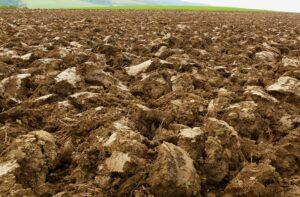OTP: the arable land market contracted last year as well
The arable land market narrowed further in 2023: in 29 percent fewer transactions, 3 percent less arable land changed hands than a year earlier – according to the latest OTP Agricultural Land Value Map, which processed the real estate database of the National Tax and Customs Office (NAV).

(Photo: Pixabay)
According to OTP Jelzálogbank’s announcement on Tuesday, the price of agricultural land per hectare increased from HUF 1.989 million in 2022 to HUF 2.064 million last year, based on NAV (not yet complete) data. Prices rose the most in the counties of Hajdú-Bihar and Somogy, by 16 and 15 percent, respectively. The other extreme, a 15 percent decrease, was experienced in the counties of Heves and Nógrád.
In terms of cultivation branches, in 2023 the price of arable land increased the most, by 6.7 percent
The 4.6 percent increase in the price of lawn areas was followed by a 2.5 percent increase in the price of forest areas, while there was a drop of more than 8 percent in the garden and fruit category. It was pointed out that the number of sales decreased from 40.8 thousand in 2022 to 29.1 thousand in 2023, by about 29 percent. The number of transactions only increased minimally in Baranya, by only 0.1 percent, while in Heves county it decreased by 69 percent. Examining the turnover based on the size of the total land area involved in the sales and purchases, a drop of only 2.6 percent took place in 2023. All of this indicates that the decrease in the area of land involved in the sale is far behind the decrease in the number of transactions, thus on average larger areas of land were sold than in 2022.
According to OTP’s Agricultural Land Value Map, in 2023 approximately 36.8 thousand hectares of agricultural land changed hands by sale and purchase
The largest area, about 3.8 thousand hectares, was sold last year in the county of Jász-Nagykun-Szolnok, while the other extreme was the counties of Komárom-Esztergom and Baranya with 450-650 hectares. The area of agricultural land sold increased in seven counties in the past year, with the largest increase in Baranya and Jász-Nagykun-Szolnok, by 55 and 49 percent, respectively. In Heves and Zala counties, however, the decline exceeded 35 percent. They pointed out that the price of agricultural land has been steadily increasing for several decades. As it did during the global economic crisis that started in 2008, it also proved resilient in the changed environment due to the coronavirus epidemic. A hectare of farmland bought in 2010 increased its price by an average of 3.6 times by 2023. The continued slowdown of the arable land market last year can be traced back primarily to the deterioration of the income position of crop cultivation in the last two years, which occurred for several reasons – István Szabó, OTP’s agricultural sales director, explained in the announcement. At the moment, however, there are already signs of consolidation, a slight rise in crop prices, and a readjustment of cost levels, whose positive impact on turnover can be further strengthened by the recent amendments to the Land Transfer Act and the increasingly prominent generational change.
MTI
Related news
AM: Government helps farmers with a loan moratorium
🎧 Hallgasd a cikket: Lejátszás Szünet Folytatás Leállítás Nyelv: Auto…
Read more >More than 100 Hungarian farmers also demonstrated in Brussels
🎧 Hallgasd a cikket: Lejátszás Szünet Folytatás Leállítás Nyelv: Auto…
Read more >NAK: Domestic producers await customers with an ample supply of all pine species
🎧 Hallgasd a cikket: Lejátszás Szünet Folytatás Leállítás Nyelv: Auto…
Read more >Related news
How do young adults celebrate?
🎧 Hallgasd a cikket: Lejátszás Szünet Folytatás Leállítás Nyelv: Auto…
Read more >Vajda-Papír celebrates Ooops!’s 15th anniversary with a hybrid AI campaign
🎧 Hallgasd a cikket: Lejátszás Szünet Folytatás Leállítás Nyelv: Auto…
Read more >Pre-holiday shopping at up to half price
🎧 Hallgasd a cikket: Lejátszás Szünet Folytatás Leállítás Nyelv: Auto…
Read more >






